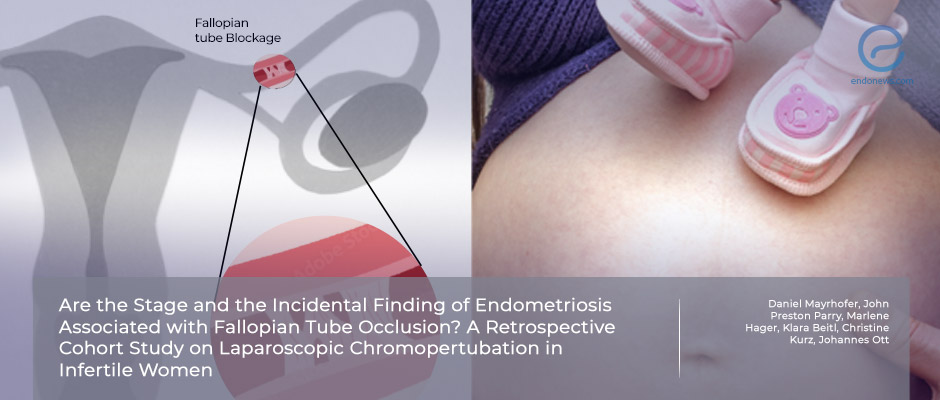Fallopian tube occlusion in infertile women with endometriosis
Sep 9, 2022
Fallopian tube occlusion is more frequently diagnosed in infertile women with moderate and severe endometriosis.
Key Points
Highlights:
- Infertility in women having endometriosis may be due to several factors: impaired follicular quality/quantity, distorted pelvic anatomy, dysfunction of tubal peristalsis, and implantation problems.
Importance:
- Tubal status should be evaluated to improve the success of infertility management in endometriosis patients.
What’s done here?
- This retrospective cohort study evaluated the effect of endometriosis on Fallopian tube occlusion in infertile women.
- The study group (n=275) included infertile women with laparoscopically-confirmed endometriosis, and the control group (n=49) included those without endometriosis undergoing laparoscopic chromopertubation.
- Fallopian tube patency was the primary outcome evaluated by laparoscopic chromopertubation (documented independently for each Fallopian tube; as ‘proximal’ or ‘distal’).
- “Incidental endometriosis” was defined in women without pelvic pain and ultrasonographic signs of endometriosis preoperatively but diagnosed as endometriosis during the operation.
Key results:
- Fallopian tube occlusion was more frequently diagnosed in the endometriosis group compared to the control group.
- Higher rASRM stage and secondary infertility were associated with an increased risk of any kind of tubal occlusion.
- Incidental endometriosis did not affect the risk of Fallopian tubal occlusion.
Limitations:
- Retrospective design, the small sample size in the control group, the lack of data on current or past infections are the limitations of the study.
Lay Summary
Women with endometriosis suffer from fertility problems with an incidence of 40-50%.
Among the pathophysiologic mechanisms resulting in impaired fertility in women with endometriosis, distorted pelvic anatomy due to adhesions, impaired follicular quality-quantity, dysfunction of tubal peristalsis, and implantation problems may be responsible.
Mayrhofer et al, from Austria and the USA, published a study entitled “Are the Stage and the Incidental Finding of Endometriosis Associated with Fallopian Tube Occlusion? A Retrospective Cohort Study on Laparoscopic Chromopertubation in Infertile Women” in the Journal of Clinical Medicine. The authors sought to evaluate the effect of endometriosis on Fallopian tube occlusion in infertile women.
All participants underwent laparoscopic chromopertubation to evaluate tubal patency. Fallopian tube occlusion was more frequently diagnosed in the endometriosis group compared to the control group. Multivariate regression analysis showed that higher rASRM stage and secondary infertility were significant factors for the presence of any kind of fallopian tube occlusion.
Incidental endometriosis, which was defined as "women without pelvic pain and ultrasonographic signs of endometriosis preoperatively but diagnosed as endometriosis during the operation" did not have any effect on the risk for Fallopian tubal occlusion.
“Endometriosis seems to be associated with an increased risk for fallopian tube occlusion.” the authors added.
Research Source: https://pubmed.ncbi.nlm.nih.gov/35807038/
endometriosis chromopertubation fallopian tube fertility proximal distal occlusion advanced stage incidental

